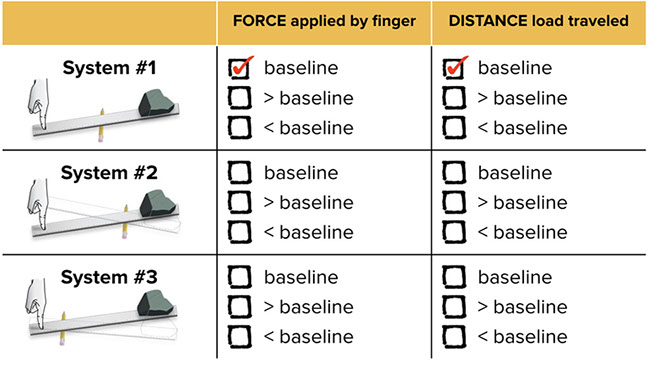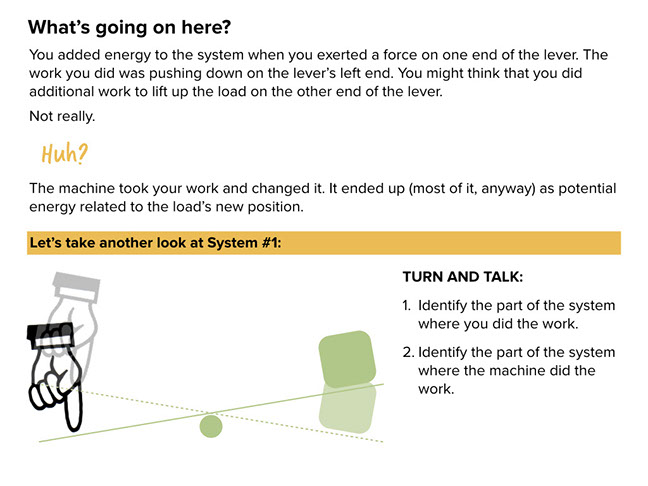SciGen Teacher Dashboard
Unit E2
Work and Machines
Lab: The Clever Lever
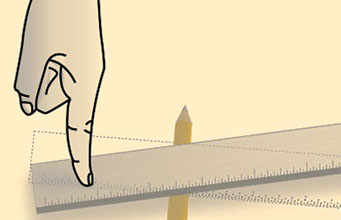 Duration: Approximately 45 minutes
Duration: Approximately 45 minutes
This activity investigates three types of levers. Students will construct levers using a weight, a dowel (or a thick marker or a pencil) and a ruler. This investigation is an opportunity to correctly use the terms force and work and learn the definitions of fulcrum and lever. Students construct three levers, one for each class of lever, and reflect on the amount of force required (input) and work produced (output) by each lever.
LEARNING OBJECTIVE
Students create three levers and reflect on the amount of force required, and work produced, by each lever.
Teacher Tips
- For the weight, use an object heavy enough so it can’t be easily catapulted across the table! A heavy, flat rock works well. A cell phone is heavy enough but is too valuable to risk having catapulted.
- A rigid wooden ruler works well but any stiff, thin, and long object will work.
- A thick marker is best for the dowel—about 1/2 inch thick is ideal. A pencil can also work as a fulcrum.
Materials (per group)
- a weight (perhaps a rock with a flat side)
- a long, flat piece of wood (like a ruler or paint stirring stick)
- a dowel (a thick marker, crayon, or pencil)
Safety Checks
- Review with your students all your school's safety protocols when doing labs.
- Set ground rules about weights being placed on the lever, never flung or launched.
Teacher Tune-ups
Teaching Notes
ACTIVITY OVERVIEW
- Basic lever set-up (5 minutes)
- Observe system #1 (5 minutes)
- Observe system #2 (5 minutes)
- Observe system #3 (5 minutes)
- Worksheet: Thinking about Force and Distance with Levers (25 minutes)
Basic lever set-up (5 minutes)
Have students gather materials and construct the basic set-up. You may opt to have students work in groups.
Each group will need:
- a long flat piece of wood or other rigid material (like a ruler)
- a dowel (like a large marker)
- a weight (like a rock with a flat side)
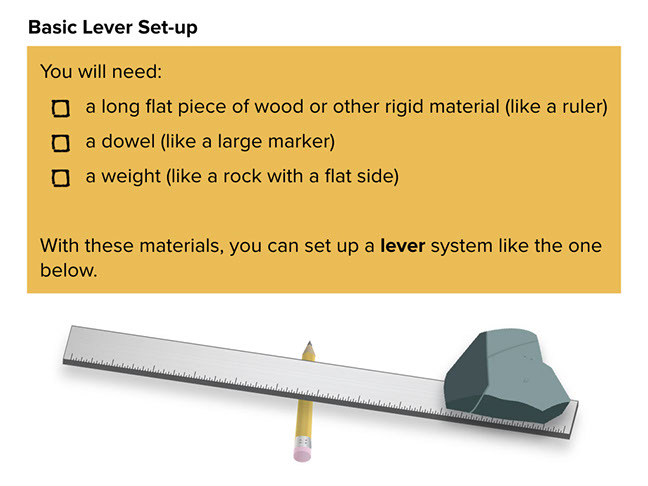
Observe system #1 (5 minutes)
When presenting System #1, emphasize the vocabulary. Also note that the rock or weight is called the load and when pushing down on the ruler, students are applying a force. The term baseline is introduced. The baseline is a reference point. You may wish to ask students where on a basketball court the baseline is located. It is the back lines under the baskets. After a point is made, play begins here. In a way, it is a reference point for the game to continue. Here the amount of force used to push the ruler down in System #1 is the baseline. Students will decide whether other forces are less than or greater than this baseline force.

Observe system #2 (5 minutes)
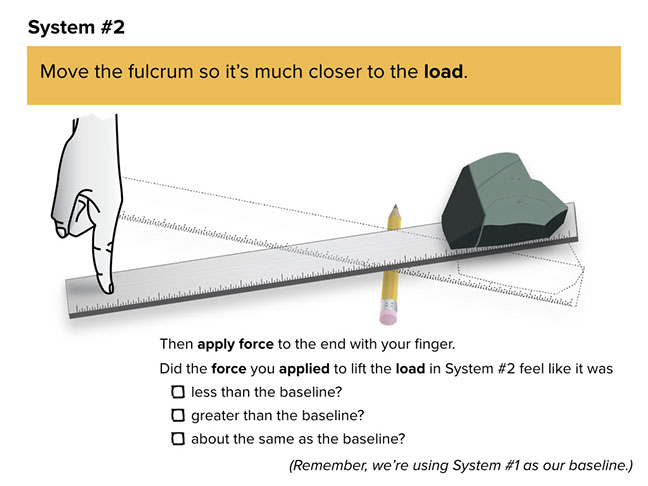
Students construct System #2. Have each student apply an effort so they can determine whether the amount of force applied is less than or greater than the baseline. Students should agree that the force is less than the baseline.
Observe system #3 (5 minutes)
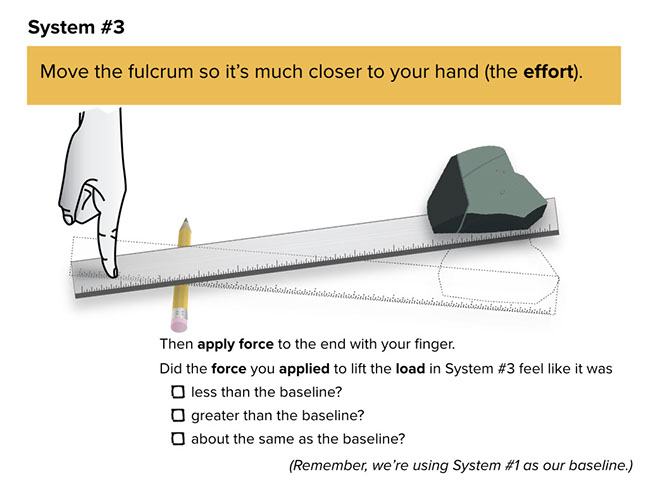
Students then create System #3 following the simple directions. Again have each student apply an effort so they can determine the amount of force relative to the baseline. Students should agree that the force is greater than the baseline.
Worksheet: Thinking about Force and Distance with Levers (25 minutes)
Ask a student to read the answers in the column “Force applied by the finger.” Some students who have difficulty with math symbols need to be reminded that “>” is read “greater than” and “<” as “less than.”
Have students follow the instructions and revisit their three lever systems to compare the distance that the load was lifted. Some students may wish to carefully measure how high the end of the ruler with the load travels.
Have students discuss their findings. You may wish to have each student write 2 or 3 sentences about their observations. A complete response may state: “In system #2 less force was applied and the load traveled less than #1. System #3 was the opposite – more force resulted in the load traveling more. More work was done in System #3.”
BETA Version - Please send comments and corrections to info@serpinstitute.org
